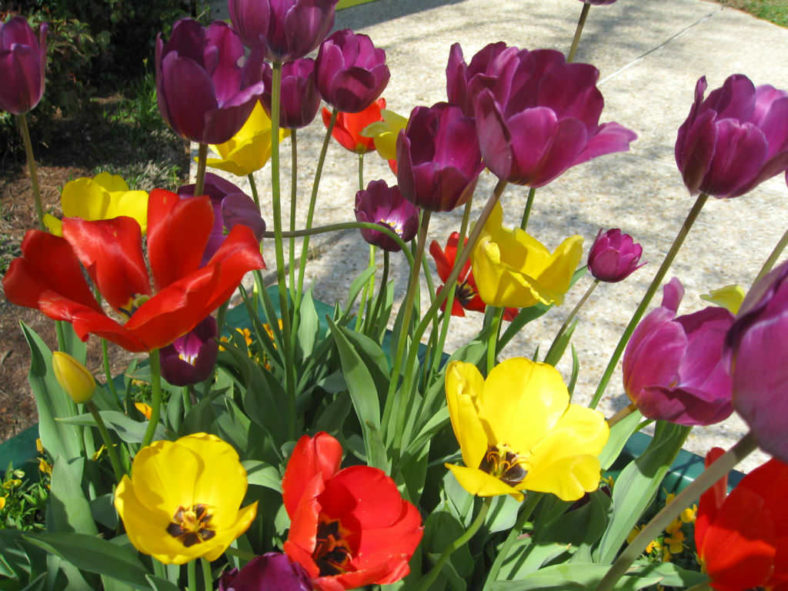The genus Tulipa, also known as Tulips, has had a fascinating history. Although closely associated with Holland, tulips were first cultivated in Turkey. The name "tulip" is believed to be derived from the Turkish word for turbans, "tulbend," because of their resemblance. They gained popularity in Europe in the 17th century, peaking in 1636-1637 with "Tulipmania," a period when the price of tulip bulbs was higher than the price of a house. Thankfully the price has adjusted, and we can all enjoy the bulbs now.
Tulips are perennial, spring-blooming bulbous plants, although they are short-lived in many areas. There are 15 divisions of tulips based on flower shape and time of bloom. The broad, strappy leaves have a waxy coating that gives them a blue-green color. There are usually 2-6 leaves per plant. Flowers are usually cup-shaped, with three petals and three sepals, although a few varieties are more star-shaped. They have been hybridized in just about every color but blue. The base of the flower is often a darker color. Most tulips have one flower per stem, but some are multi-flowered varieties.
Growing Conditions
Light: Full sun to partial shade. Too much shade will diminish blooming.
Hardiness Zones: Hardiness Zone USDA Hardiness Zones 4 – 6. A few can survive in Zones 7 and 8, but most need a cold winter to bloom in successive years. Tulips can be temperamental to weather and water. Sometimes it's easier to grow them as annuals, planting a new batch every fall.
Water: If it doesn't rain, water weekly until the ground freezes.
Soil: A fertile, peat-based potting soil with excellent drainage is beneficial.
Fertilizer: Feed each spring when the leaves first appear.

Pests and Diseases
Tulips are popular with many animals, including deer, squirrels, and other rodents. In some areas, it's just not worth planting Tulips in the ground. You are better off with Tulips in protected containers. You can try deterrents or interplant with daffodils, but be prepared to lose a few.
Growing Tips
Tulips need a chilling period and are planted in the fall. Planting depth should be about three times the bulb's diameter; small bulbs will be about 5 to 6 inches (12.5 to 15 cm) deep, and larger bulbs 8 to 10 inches (20 to 25 cm). Add a handful of bulb food or bone meal at planting time and water well. Keep watering weekly, if it doesn't rain, until the ground freezes. Feed again when the leaves emerge in the spring.
The foliage needs to be allowed to continue growing after the petals drop to feed the bulb. However, the flower stalks can be removed to prevent them from setting seeds and stealing energy from the bulb. Once the leaves die back, they will pull easily from the soil. The bulbs prefer to be on the dry side during summer dormancy. Feed each spring when the leaves first appear.
If you have trouble getting your tulips to come back each year, it could be because the winter is not cold enough, the summer is too wet, or something has eaten the bulbs. Whatever the reason, you may prefer to grow your tulips as annuals, replanting each fall. It's a bit more work, but you won't need holes as deep as perennialized planting.
Source: about.com
Links
- Back to genus Tulipa
- Plantpedia: Browse flowering plants by Scientific Name, Common Name, Genus, Family, USDA Hardiness Zone, or Origin

